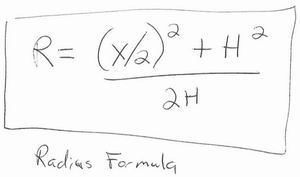Question
I am seeking a source for a shaper cutter or router bit that will let me make an applied molding to add to a tradional raised panel door or flat panel door. The end result would be a door with a raised molding and would require a 3/8 inch rabbet cut as a second pass. This cutter would typically have a half round and then generate a lot of height quickly with additional detail that would rest on the floating panel. Almost every high end cabinet company offers this addition detail on their door lineups. I would appreciate any help.
Forum Responses
(Architectural Woodworking Forum)
From contributor A:
Do you have any interchangeable cutterheads for a shaper? If not, there is a variety of cutterhead designs you can choose from. You can have a custom profile made to your needs or choose an off the shelf profile. I have five different styles of heads I use for different purposes. One general use design is from Leitz tools, which I buy stock knives for, for just the same purpose as you're describing. I have one profile that sounds like what you are looking for that I selected out of their catalog. I personally wouldn't use a router bit for this, mostly because I have the tooling to do it on the shaper, so I can't direct you to any specific make and model.
